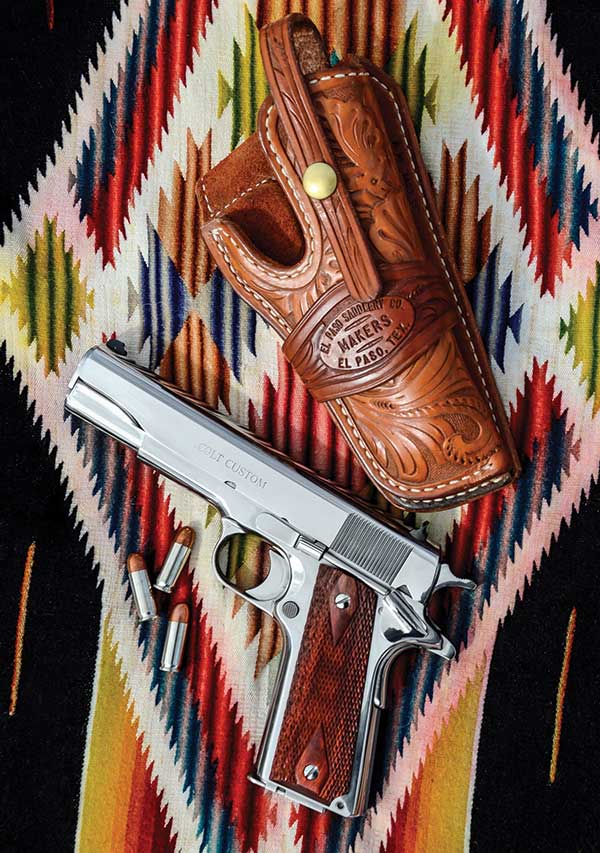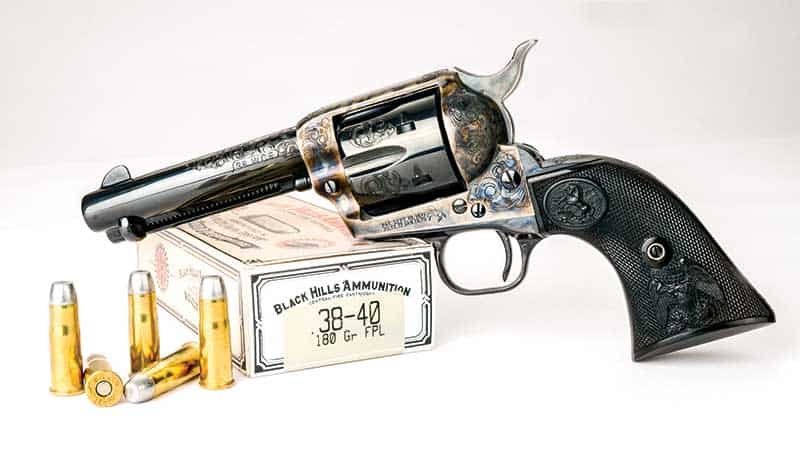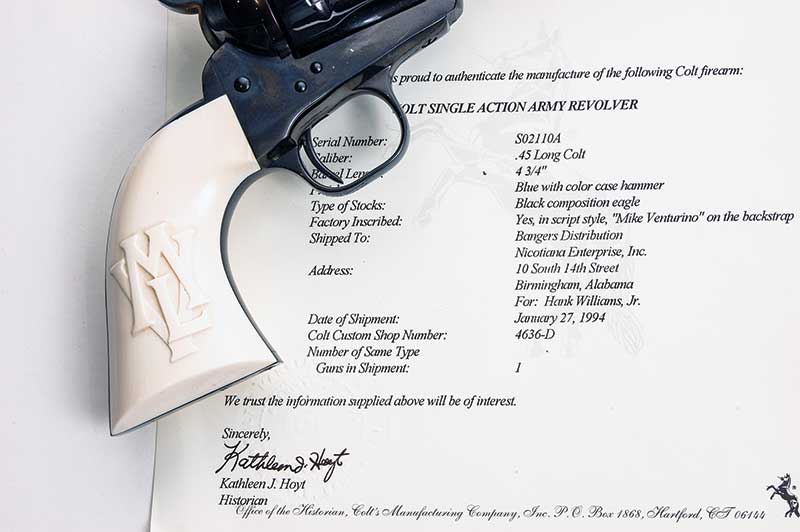Category: All About Guns

In the last 10 years we have seen a number of cartridges introduced that all have similar design characteristics. They have a relatively short, minimum-taper cartridge case with sharper shoulder angles, moderate capacity, fast twist rates, what would seem to be heavy bullets for the case size, and chamber throat designs that are long and tight.

A few examples of these cartridges are the .300 WSM, 6.5mm Creedmoor, 6mm Creedmoor, and most recently the .224 Valkyrie. All of them deliver downrange performance and accuracy beyond anything that would be expected from a cartridge of their size. So what exactly is behind this shift from traditional cartridge designs with a big case pushing a projectile at high velocity?
Traditional Cartridges
Let’s start by looking at the design characteristics of several long-standing traditional cartridges. This design philosophy, for the most part, has used a big case with a lot of taper and a modest shoulder angle with a lot of propellant behind a medium-weight projectile. This formula is about generating speed.
A lot of case taper was considered necessary for reliable extraction, and modest shoulders were easy to produce. Some examples are the .22/250 Remington, .243 Winchester, .264 Winchester Magnum, and .300 Winchester Magnum. These cartridges all have moderate to slow twist rates and relatively modest weight projectiles. The bottom line is their designers wanted bullets to go fast. The tables on p. 45 show a comparison of these four traditional cartridges and their modern counterparts.
As you can see, all the newer cartridges have sharper shoulder angles. They all have less case capacity than a comparable older cartridge. They all have the same lead angle of 1.5 degrees. They all have a lead diameter barely over the projectile diameter. They all have faster twist rates. And they all shoot heavy, high-ballistic-coefficient projectiles. Considering their smaller case capacity, they all produce muzzle energy levels quite close to that of much larger capacity cases in the same caliber. What I could not show in the tables is that all the newer cartridges have much less body taper than the older cartridges. Finally, all of the newer cartridges have established reputations for very good to incredibly good accuracy with out-of-the-box ammunition and rifles.
All About the Bullet
Today, cartridge and ammunition designers are putting much more emphasis on projectile performance characteristics. If I could sum up this philosophy, it would be “let the bullet do the work.” In other words, design a cartridge that can use a heavy, very aerodynamic projectile, launch it at a more modest velocity, and let the bullet aerodynamics provide the downrange ballistics. This is the common thread binding the new efficient cartridges listed above. The benefits to the shooter are actually better downrange ballistics despite the lower muzzle velocities, less recoil, and longer barrel life.
The old-school approach to cartridge design—large case and going fast—resulted in very heavy charges of slow propellants. In general, with this approach the propellant is not completely burned by the time the projectile exits the barrel. The result is faster barrel wear, severe muzzle blast, and heavy recoil.
To take a concrete example, let’s compare the ballistics of the .264 Win. Mag. with a 140-grain flat-base projectile to the 6.5 Creedmoor with a 143-grain boattail projectile (see charts above). You might cry foul, because those are two very different bullets, but hear me out. The .264 Win. Mag., because of the 1:9-inch twist it was designed around, can’t adequately stabilize more bullet than a 140-grain flat-base Spitzer. Even adding a boattail would result in a marginally stable projectile that would likely have stability problems on a cold day. Not so with the Creedmoor, because of the 1:8-inch twist.
As you can see, the 6.5 Creedmoor quickly makes up the 330 fps deficit in muzzle velocity it has with the .264 Win. Mag. There is also very little difference in the trajectory of each cartridge despite the 330 fps difference. If the graphs were taken to greater distances, the 6.5 Creedmoor would leave the .264 in the dust. This is the value of emphasizing the projectile design as part of the cartridge design. The 6.5 Creedmoor will, for all practical purposes, perform with the .264 Win. Mag. It does so with less recoil, 15 to 20 grains less propellant, and about three times the barrel life.
New Accuracy Standards
The approach to designing an inherently accurate cartridge has also changed. The traditional way to get an accurate cartridge-chamber combination was to have no lead or throat in the chamber, the bullet seated right up to or actually into the rifling, a tight chamber-to-cartridge neck fit, and a sharp and concentric crown on the muzzle. Lead angles tended to be a little random, from 1.5 degrees to up to 15 degrees. Little attention was paid to the cartridge shape or throat design as it pertained to the projectile. Throat or lead diameters were allowed to be anywhere from .003 to .007 inch larger than projectile diameter.
These types of lead diameters allow a lot of room for a projectile to wander around while trying to get seated in the rifling. This can lead to the projectile entering the rifling at an angle relative to the axis of the bore. This angle is called principle axis tilt (PAT). It is the angle between the line of flight of the projectile and the axis through the center of the projectile from the rear to the point. PAT defines the angle of attack or, put another way, the angle the bullet is flying at relative to the line of flight. The bigger this angle, the less accurate the bullet will shoot.
Minimizing PAT
Ballisticians have gained better insight into projectile dynamics and how they affect performance. Along with the quality of the construction of the projectile, jacket concentricity, and consistent core swaging, the PAT of the projectile has to be controlled and minimized to obtain top accuracy. If the projectile enters the rifling at an angle, it will travel down the barrel at that angle, and it will leave the muzzle at that angle. The projectile will be starting out behind the curve for best accuracy before it ever leaves the gun.
Better understanding the relationship between the projectile and barrel, designers are now designing cartridges and chambers with an eye toward controlling the entry of the projectile into the rifling and thus the PAT. The optimum lead angle into the rifling has been pretty well established for quite some time as 1 degree 30 minutes, or 1.5 degrees. Many new cartridges have a very tight lead or throat with a diameter that is only .0005 inch bigger than nominal projectile diameter. This tight fit between the projectile and lead forces the projectile to enter the rifling as straight as possible. It is an old wives’ tale that “jump to the rifling,” or bullet travel prior to entering the rifling, is bad for accuracy. That just isn’t true. There can be a significant jump to the rifling if the lead diameter is designed to be very close to the projectile diameter. The only limitation to throat length is getting too much jump to the rifling and having a projectile running into the rifling at a velocity that damages the jacket.
The quest to improve accuracy and limit PAT is another reason we see cases with minimal body taper and sharper 30- to 35-degree shoulders. These two things aid in forcing the cartridge case to align itself better with the axis of the barrel. The minimal taper and sharper shoulder don’t allow the cartridge to lie off center in the chamber as much as a more tapered, shallow-shoulder-angle case. This in turn further helps to limit and control the PAT of the projectile.
So, have these changes in design approach and philosophy really brought shooters better-performing, more-shootable cartridges? Another look at cartridge specs below provides the answer. The .224 Valkyrie does not match the .22/250 with the heaviest projectiles that the .22/250 can shoot, but the Valkyrie burns about 8 to 10 grains less powder in the process. The .224 Valkyrie can fire the heaviest projectiles made in .224-inch caliber. Not so the .22/250 without a rebarrel and a faster twist.
For long-range shooting, the .22/250 can’t touch the Valkyrie. Likewise, the 6mm Creedmoor can run away and hide from a .243 Winchester. The .300 WSM produces the same performance as the .300 Win. Mag. but does it with 6 to 8 grains less propellant. In every one of the comparisons, the newer cartridge will have longer barrel life, less recoil, and less muzzle blast because of its more efficient design. Lastly, at this point there is little argument about the outstanding accuracy of any of these new cartridges. Shooters have never had it so good.

New Cartridge Specs
| Cartridge | .224 Valkyrie | 6mm Creedmoor | 6.5 Creedmoor | .300 WSM |
| Twist Rate (in.) | 7 | 7.5 | 8 | 10 |
| Shoulder Angle (deg.) | 30 | 30 | 30 | 35 |
| Lead Diameter (in.) | .2246 | .2435 | .2645 | .3099 |
| Lead Angle (in.) | 1.5 | 1.5 | 1.5 | 1.5 |
| Case Capacity (gr. H2O) | 30.9 | 50 | 52 | 79 |
| Bullet Weight (gr.) | 88 | 103 | 143 | 190 |
| G1 BC | .545 | .512 | .625 | .595 |
| Muzzle Velocity (fps) | 2,675 | 3,050 | 2,700 | 2,875 |
| Energy (ft.-lb.) | 1,398 | 2,127 | 2,315 | 3,487 |
Traditional Cartridge Specs
| Cartridge | .22/250 Rem. | .243 Win. | .264 Win. Mag. | .300 Win. Mag. |
| Twist Rate (in.) | 14 | 10 | 9 | 10 |
| Shoulder Angle (deg.) | 28 | 20 | 25 | 25 |
| Lead Diameter (in.) | .2245 | .2463 | .268 | .315 |
| Lead Angle (in.) | 2.0 | 1.5 | 2.0 | 1.5 |
| Case Capacity (gr. H2O) | 43 | 52.8 | 82 | 89 |
| Bullet Weight (gr.) | 60 | 1000 | 140 | 180 |
| G1 BC | .240 | .405 | .465 | .450 |
| Muzzle Velocity (fps) | 3,650 | 2,960 | 2,940 | 2,950 |
| Energy (ft.-lb.) | 1,625 | 1,960 | 2,684 | 3,475 |
Recently on an Internet website a fellow asked me, “Do you have a barbeque Colt?” I replied, “Um, No, I don’t think so.” Then another fellow, sensing my ignorance, added the term arose from fancied-up handguns Texas Rangers reserved for backyard BBQs. A third fellow added, “Mike, you just showed a picture of an engraved Colt SAA, so you definitely have a BBQ Colt.” All this got me to thinking, “What if I was invited to a BBQ requiring a fancy handgun?”
Most of my life I could have been named Mister Ordinary. My hats, saddles, boots and clothes were all plain. At age 24 I surrendered to just a mite of ostentation. Throughout my high school years, I used laundry markers to put my MLV initials in brand, so when I ordered my first S.D. Myres holsters I had them hand-carved accordingly. Since then, I’ve plastered my “brand” on just about everything. Over the years two readers had branding irons made as presents for me. Once when heating one of those branding irons Yvonne said she saw a strange gleam in my eyes and vacated the premises. I deny that!
Candidate Evaluation
After this Internet chat and weeks of lockdown boredom, I sat in my gun vault and considered my candidates for BBQ guns. One would be a Colt 1911 of the ELCEN serial number range. These were ordered by a major distributor supposedly for sale “south of the border.” For this reason, they were all .38 Supers. Made of stainless steel (except for the sights) they were given such a high polish I thought at first it was nickel-plating. Grips on mine are checkered rosewood. Then I turned to El Paso Saddlery for a floral carved holster for packing it.
However, my most gussied-up handguns are single actions. In fact, I could attend BBQs every weekend for months without feeling underdressed toting a fine SAA. Two of mine are engraved Colts. The .38 WCF/.38-40 was made up expressly for the Colt Collector’s Association. It’s numbered 79 of 150. It has 4.75″ barrel with tasteful engraving, but as yet I’ve not equipped it with fancy grips. I can’t make up my mind as to what material they should be crafted from — fancy walnut, checkered rosewood, bison bone, ivory, or something else.
My other fancy Colt SAA was engraved here in Montana by Brian Gouse. It’s also 4.75″ barreled with the factory issue grips — for now. What takes it a notch up is the two cylinders are fitted. The original one is .44 WCF/.44-40. With considerable searching I located an unfired .44 Special cylinder and had it engraved also by Brian. If attending a backyard BBQ where I might be charged by a raging bull or hungry panther I’d fit the .44 Special cylinder and load it with the special run of Black Hills .44 Special factory loads with 250-gr. SWCs.
If attending a BBQ with prestigious guests where I might have to resort to name dropping in order to get my proper quota of attention, I’d wear a very special Colt SAA. This one is a .45 with 4.75″ barrel and full blue finish. Its stocks are exquisitely relief carved ivory with MLV on one side and steer head on the other. They are the work of Paul Persinger of El Paso. This Colt bears name dropping because it was ordered from Colt by country/western musician Hank Williams, Jr. with my name engraved on the backstrap.
Don’t Forget Your Better Half
So far, I’ve left Yvonne out of this imagining game. I couldn’t attend such a BBQ so finely adorned with her looking plain. If we were attending a BBQ together, we have a perfect, yet not identical pair. Back in the early 21st century when U.S. Firearms was making beautiful quality single actions, I ordered two with engraving. Yvonne already had a Colt SAA .44 WCF/.44-40 with a 5.5″ barrel, so she asked for her USFA to have the same length. Obviously, my preference for barrel lengths is 4.75″. Hers has serial number YMV1 and mine is stamped MLV3.
Truth be told, the backyard BBQs I’ve attended in my lifetime could probably be counted on the fingers of one hand. But who knows? It could happen.









While handguns are hot commodities in an era where we’re seeing increasing numbers of licensed concealed-carriers and Constitutional Carry states, that doesn’t mean manufacturers have been ignoring the rifle market. This year has seen a number of new introductions, with a few notable examples in the renewed straight-pull action market. Lever-actions are making a comeback, too, as we’ve seen with Ruger’s new Marlin 1895 SBL, and other companies are providing fresh, clean takes on tried-and-true concepts. Here are just some of the new rifles we’ve seen in 2022.

Bought by Franklin Armory in 2020 after the Remington Outdoors auction, Bushmaster Firearms launched several new models in 2022, and one of the most interesting is the BA30. Externally, the gun looks like a semi-automatic AR .308 platform, but a closer look reveals some unique features. There are easily accessible charging handles on both sides of the receiver, and that’s because this gun is a dedicated straight-pull rifle with an action-assist mechanism that allows users to rapidly rack the next round into battery.

Introduced in 2016, the Henry Long Ranger platform added accuracy and precision to the lever-action through the use of a six-lug, rotating bolt. Now, Henry expanded its Long Ranger lineup with a handy, utilitarian version in the form of its Long Ranger Express. Earlier models were attractive, but the wood furniture, polished bluing and long barrels didn’t lend themselves to down-and-dirty field work. The Express model includes a short 16.5″ carbine barrel, durable wood-laminate furniture and a matte metal finish that’s designed to beat the elements. Best of all, it’s chambered in 5.56 NATO.

Mossberg’s also offering a utilitarian rifle in the form of its revamped MVP Patrol, which accepts AR-pattern magazines and is chambered in .300 BLK at launch. The all-black, polymer-stocked rifle features a compact 16.25″ barrel topped with a flash suppressor and a set of adjustable iron sights with a highly visible, fiber-optic front post. Topping the compact receiver is a short section of Picatinny rail for optics mounting. Each rifle ships with a 10-round magazine, and the gun weighs only 6.5 lbs., unloaded.

One of the most popular manufacturers of AR-15s in the U.S. has been Smith & Wesson, and the company’s now offering an all-new lineup of refreshed rifles complete with new furniture and upgraded features. The Smith & Wesson Volunteer XV is built on a mil-spec receiver set and comes with a host of options, depending on the model. B5 Systems supplies much of the furniture in the new guns, as well as Bravo Company, and the rifles are available with short 16.5″ carbine barrels or a longer 20″ DMR-style set-up with a rifle-length gas system. A crisp single-stage trigger is also included in all of the guns.

A long, fruitful relationship between Springfield Armory and HS Produkt of Croatia just bore new benefits for American firearm enthusiasts with the launch of the all-new Springfield Armory Hellion. Based on the Croatian service rifle, the VHS-2, the Hellion is a bullpup-style rifle that’s been slightly modified to better-align with the needs of the U.S. market. The 5.56 NATO-chambered gun accepts STANAG magazines and AR-15 pistol grips, and it’s also easily modified to eject spent cases from either the right or left side of the gun, so lefties won’t be left out of in this new release.

Savage Arms Impulse Elite Precision
Until 2022, the straight-pull rifle lineup from Savage Arms consisted mainly of hunting-oriented options, and now, there’s an all-new long-range precision platform available in the Impulse lineup. The 110 Elite Precision sits inside of a Modular Driven Technologies Adjustable Core Competition chassis, which includes M-Lok attachment slots and an ARCA rail fore-end. The guns are built with a button-rifled, modified Palma-contour barrel that measures 26″ to 30″ in length, depending on the caliber selected. Seven of today’s most popular long-range calibers are available in the gun, and the rifle feeds from AICS-pattern detachable magazines.

After the successful rollout of its Wildcat semi-automatic .22, Winchester expanded its rimfire rifle lineup in 2022 with the launch of the Xpert, a bolt-action platform based on a layout and construction similar to its semi-automatic offering. You’ll get an accuracy-enhancing Bentz chamber, a button-rifled precision barrel and Winchester’s M.O.A. trigger designed to break “like glass.” Built with a lightweight polymer stock, the Xpert weighs in at a scant 4.5 lbs., making it easy to carry afield. Each rifle is equipped with a 10-round rotary magazine, and the gun accepts all Ruger 10/22 magazines, too.



